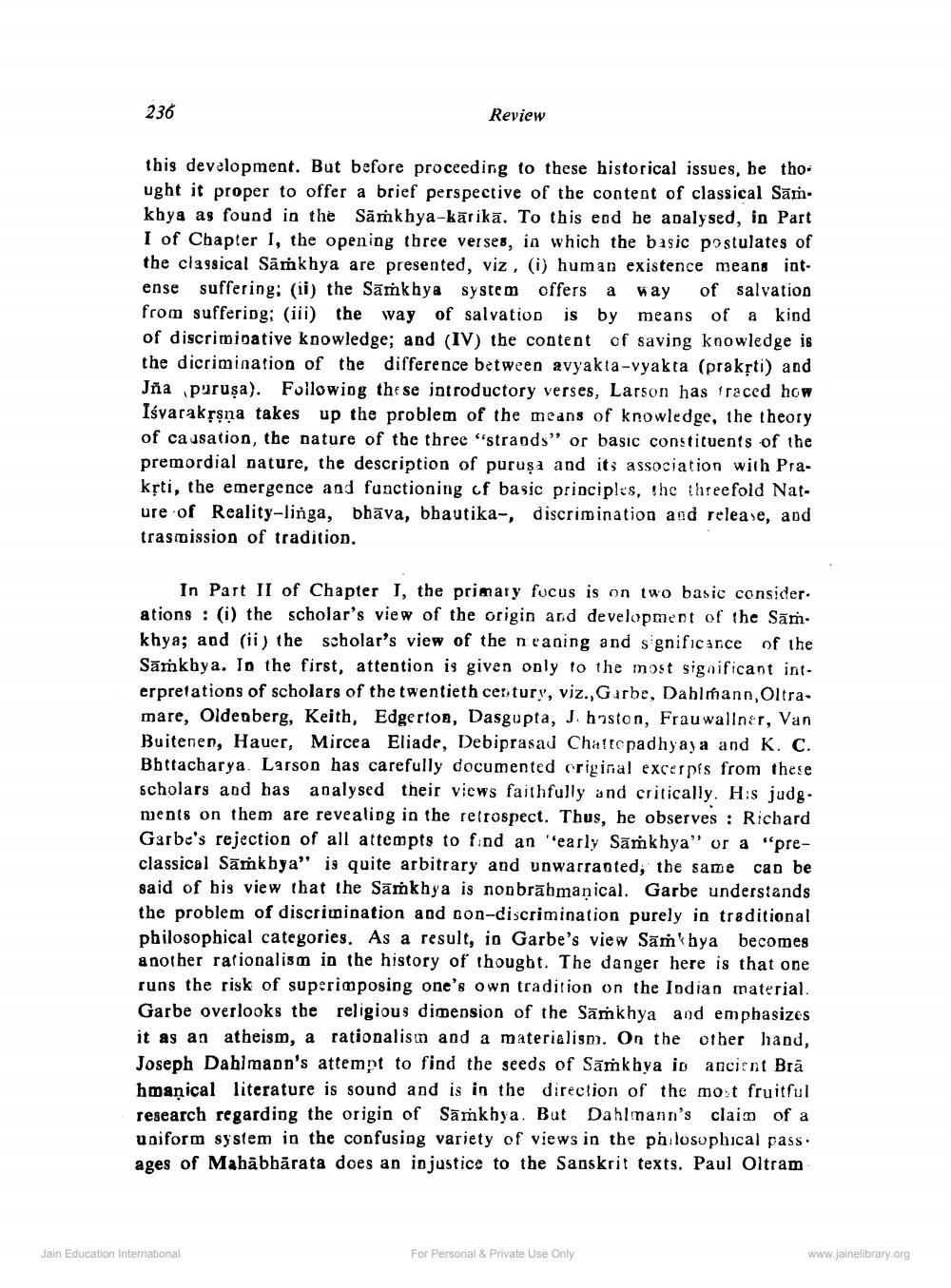________________
236
Review
this development. But before proceeding to these historical issues, he tho. ught it proper to offer a brief perspective of the content of classical Sām. khya as found in the Sāṁkhya-kārikā. To this end he analysed, in Part I of Chapter 1, the opening three verses, in which the basic postulates of the classical Sāṁkhya are presented, viz , (i) human existence means int. ense suffering; (ii) the Sāmkhya system offers a way of salvation from suffering; (iii) the way of salvation is by means of a kind of discrimioative knowledge; and (IV) the content of saving knowledge is the dicrimination of the difference between avyakta-vyakta (praksti) and Jña puruşa). Following these introductory verses, Larson has raced how Isvarakļşna takes up the problem of the means of knowledge, the theory of causation, the nature of the three "strands" or basic constituents of the premordial nature, the description of purusa and its association with Prakřti, the emergence and functioning of basic principles, the threefold Nature of Reality-linga, bbāva, bhautika-, discrimination and release, and trasmission of tradition.
In Part II of Chapter 1, the primary focus is on two basic consider ations : (i) the scholar's view of the origin and development of the Sām. khya; and (ii) the scholar's view of the neaning and significance of the Sāṁkbya. In the first, attention is given only to the most significant interpretations of scholars of the twentieth century, viz., Garbe, Dablmann, Oltra. mare, Oldenberg, Keith, Edgerton, Dasgupta, J. hoston, Frau wallner, Van Buitenen, Hauer, Mircea Eliade, Debiprasad Chattopadhyaya and K. C. Böttacharya. Larson has carefully documented original excerpts from these scholars and has analysed their views faithfully and critically. H:s judg. ments on them are revealing in the retrospect. Thus, he observes : Richard Garbe's rejection of all attempts to find an early Sāṁkhya" or a "preclassical Sāṁkhya" is quite arbitrary and unwarranted, the same can be said of his view that the Samkhya is nonbrāhmaṇical. Garbe understands the problem of discrimination and con-discrimination purely in traditional philosophical categories. As a result, in Garbe's view Sāṁ\bya becomes another rationalism in the history of thought. The danger here is that one runs the risk of superimposing one's own tradition on the lodian material. Garbe overlooks the religious dimension of the Samkhya and emphasizes it as an atheism, a rationalism and a materialism. On the other hand, Joseph Dahlmann's attempt to find the seeds of Samkhya in ancient Brā hmanical literature is sound and is in the direction of the most fruitful research regarding the origin of Sāmkhya. But Dahlmann's claim of a uniform system in the confusing variety of views in the philosophical pass. ages of Mahābhārata does an injustice to the Sanskrit texts. Paul Oltram
Jain Education International
For Personal & Private Use Only
www.jainelibrary.org




